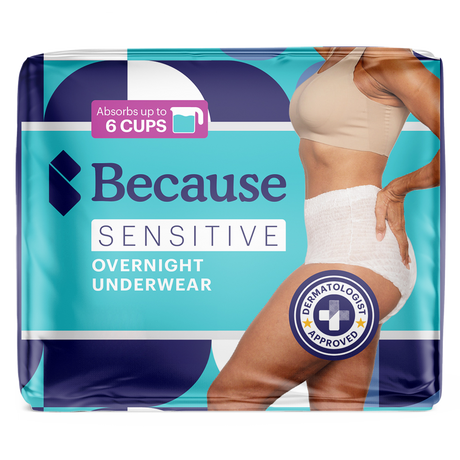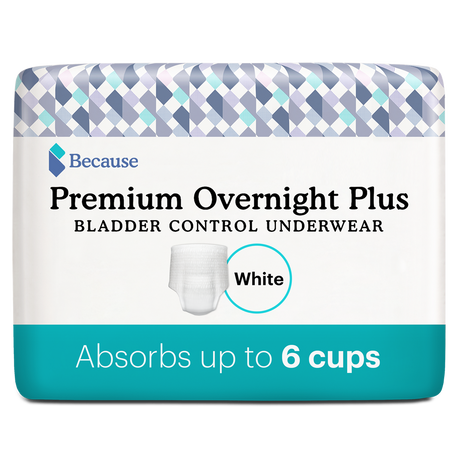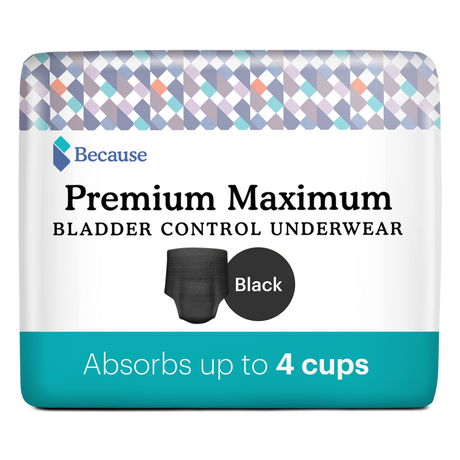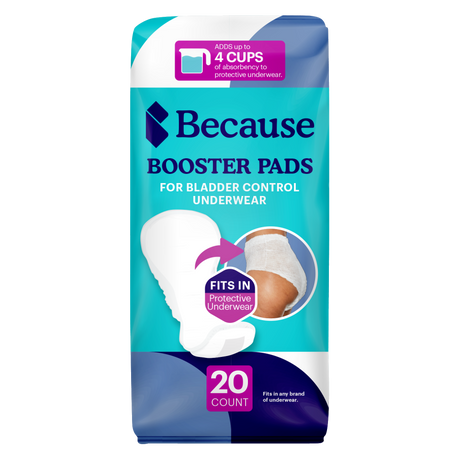What is Overflow Incontinence?
Overflow incontinence is a type of urinary incontinence characterized by the involuntary leakage of urine due to the bladder being unable to empty properly. It occurs when the bladder becomes overly full and exceeds its capacity, causing urine to overflow. You may have overflow incontinence if you find yourself unable to fully empty your bladder when you go to the bathroom and then later experience sudden release of urine.

What Causes Overflow Incontinence?
Overflow incontinence can be caused by various factors. Possible causes include bladder weakness and underactivity, obstruction of the urinary tract, nerve damage, and certain medical conditions or medications.
Bladder Weakness and Underactivity
Bladder weakness and underactivity occur when the bladder muscles are unable to contract effectively, leading to incomplete emptying of the bladder. Inactive bladder muscles can be a result of conditions such as aging, diabetes, or nerve damage. Bladder weakness can also arise from prolonged prostate enlargement which has been putting pressure on the urethra.
Obstruction of the Urinary Tract
Blockages such as bladder or kidney stones or an enlarged prostate gland in men can prevent the bladder from fully emptying. This then results in the bladder overflowing later. In fact, one of the most common causes of overflow incontinence in men is benign prostatic hyperplasia which is when the prostate is enlarged, but not cancerous.
Nerve Damage
Conditions such as Parkinson’s disease, Multiple Sclerosis (MS), spinal cord injuries, and other nerve related issues can disrupt the communication between the bladder and the brain, leading to involuntary contractions and overflow incontinence.
Certain Medical Conditions and Medications
Additionally, certain medical conditions such as diabetes, urinary tract infections, or medications like sedatives, diuretics, antidepressants, and anticholinergics can contribute to the development of overflow incontinence by affecting bladder function.
Signs and Symptoms of Overflow Incontinence
The signs and symptoms of overflow incontinence are typically characterized by a combination of urinary difficulties and involuntary leakage of urine.
Common signs include:
- Frequent dribbling of urine
- A constant or continuous leakage of small amounts of urine
- A sensation of incomplete bladder emptying
- Difficulty initiating urination
- A weak urine stream
- A feeling of fullness in the bladder even after urination
- Involuntary loss of urine
In some cases, individuals may find it necessary to strain or push in order to start or complete urination. Due to the constant dribbling or leakage, there may be a chronic dampness or wetness in the genital area.

How is Overflow Incontinence Diagnosed?
Diagnosing overflow incontinence typically involves a comprehensive evaluation by a healthcare professional. The process often begins with a detailed medical history and a discussion of symptoms experienced. A physical examination may be conducted to assess the bladder and surrounding structures.
There are several diagnostic tests that are commonly used to rule out other conditions and determine root causes of overflow incontinence and other types of urinary incontinence such as urge incontinence (also referred to as overactive bladder) or stress incontinence.
Urinalysis: Urinalysis is a test of your urine which involves a physical, a chemical, and microscopic examination. Urinalysis is often used to check for UTIs, kidney problems, or diabetes.
Post-Void Residual (PVR): A measurement to determine how much urine remains in the bladder after urination. To complete this test, your doctor will ask you to go to the bathroom and empty your bladder as well as you can. Then an ultrasound will be performed to measure the post-void result.
Urodynamic Testing: Are procedures that examine your lower urinary tract. PVR is an example of urodynamic testing. Other types of urodynamic testing include:
- Uroflowmetry: which measures the urine flow rate
- Cystometric test: Measures how much urine your bladder can hold, how much pressure builds, and how full your bladder is when you start feeling the urge
- Leak point pressure measurement: is used to identify at what pressure inside your bladder leakage occurs
- Pressure flow study: measures at what pressure your bladder needs to stimulate urination and the rate of urine flow at that pressure
- Electromyography: Electromyography is typically done if your doctor believes that your incontinence is likely related to nerve or muscle damage. Sensors will be places to measure electrical activity near your bladder. The data will be recorded and patterns will show whether the messages between your bladder and pelvic floor muscles are aligning.
- Video Urodynamic Tests: These tests utilize x-rays or ultrasounds while your bladder fills or empties so that live images or videos can be recorded.
Additionally, the healthcare provider may inquire about medications being taken, as certain drugs can contribute to bladder dysfunction. By utilizing a combination of these diagnostic tools, healthcare professionals can accurately diagnose overflow incontinence and determine the most appropriate treatment plan.

Managing Overflow Incontinence at Home
Use Bladder Protection Products
Using bladder protection products can be an effective strategy for managing overflow incontinence and its associated challenges. Products such as absorbent pads, guards, or protective underwear are designed to provide comfort, discretion, and reliable containment of urine leakage.
Our urinary incontinence underwear range in absorbency levels. From underwear that offers six ounces of protection for smaller leaks to underwear that offers 50 ounces of absorbency for heavy-duty protection, there’s a product for everyone's incontinence issues.
By wearing bladder protection products, individuals with overflow incontinence can feel more confident and secure, knowing that any accidental leakage will be contained and absorbed, preventing embarrassment and discomfort.
These products are available in various sizes, styles, and absorbency levels to cater to individual needs. They are often discreetly designed and offer advanced features such as odor control and moisture-wicking properties, enhancing overall comfort and hygiene. Additionally, using bladder protection products can simplify daily routines and allow individuals to engage in various activities and social situations without constant worry about leakage or access to restroom facilities.

Try a Bladder Supplement
Certain vitamins and supplements can be helpful for promoting bladder health and relieving the symptoms of urinary incontinence. These supplements are especially useful when combined with a bladder friendly diet and healthy lifestyle.
There are four key ingredients to look for when starting a bladder supplement: cranberry, probiotics, pumpkin seed, and soy germ.
Cranberry is well known for its ability to stave off UTIs due to the antioxidants called proanthocyanidins (PACs). Plus cranberry supplements provide a way to get these antioxidants without the sugar found in cranberry juice.
Probiotics are often more frequently associated with gut health, but they’re also important for your urinary tract. Probiotics are responsible for maintaining the balance of good bacteria in your digestive system which in turn keeps your immune system strong. To get the best effect look for probiotics that contain multiple strains of probiotics and specifically Lactobacillus.
Pumpkin seeds may not be the first thing you think of when you think of urinary health, but they’ve actually been used for more than 400 years to promote a healthy urinary tract! Pumpkin seeds are packed with fatty acids and sterols which are great for your bladder.
Soy germ has been shown to help balance the body’s hormone levels and relax the bladder muscles. You’ll often find soy germ already combined with a supplement that has pumpkin seed!
Because Bladder Control Supplement offers a variety of benefits for people with certain types of incontinence.

Lead a Healthy Lifestyle
Making certain lifestyle and diet modifications can significantly help in managing and reducing the symptoms of incontinence. Maintaining a healthy weight is crucial, as excess weight can put additional pressure on the bladder and pelvic muscles.
Regular exercise, particularly pelvic floor exercises (Kegel exercises), can strengthen the muscles that control bladder function and improve urinary control. Ask your doctor to show you targeted exercises that work for you.
It is also important to avoid or limit consumption of bladder irritants such as caffeine, alcohol, acidic and spicy foods, as they can worsen urinary symptoms. Staying adequately hydrated while moderating fluid intake, especially before bedtime, can help regulate bladder function.
Potential Treatment Options for Overflow Incontinence
Treatments for overflow incontinence depend on the underlying cause and severity of the condition. The primary goal is to address the factors contributing to the inability to empty the bladder properly.
There are five types of treatments that your doctor may prescribe or suggest for you.
Behavioral
Behavioral treatments involve changing learned behaviors to help you manage or avoid leaks. This treatment is often used for more minor conditions and as a first line treatment.
Examples of behavioral methods include: managing fluid intake, bladder training, scheduled voiding, double voiding, and pelvic floor exercises
Medication
The medications prescribed for overflow incontinence are called Alpha-adrenergic blockers. Common formulations include Cardura, Flomax, and Uroxatral. These medications work by relaxing the muscles in your urethra. In women, this medication is prescribed off-label.
If you have an enlarged prostate you may also be prescribed a 5a reductase inhibitor.
Products and Devices
Two types of products or devices can be used to help with overflow incontinence: catheters and protective undergarments. A catheter is a small, flexible tube inserted into the urethra that allows the urine to drain out. Some catheters, called suprapubic catheters, are inserted through the abdomen instead.
A regular catheter can be inserted by a clinician or by the patient themselves.
To self-catheterize:
- Empty your bladder if possible
- Gather your single-use catheter, towel, bag or tub, a container for the urine (unless you intend to empty straight into the toilet), and lubricating jelly (make sure you choose a jelly that will dissolve in water)
- Wash your hands and head of your penis
- Spread the lubricating jelly on the tip of a catheter, put the other end in the container you intend to use for the urine capture
- Gently insert the end with the jelly into the urethra opening
- Move the catheter in until urine begins to flow out
- Insert it about 1 inch more after that
- Allow the bladder to drain
- Remove the catheter slowly, and throw it away
- Wash and dry your hands
Some patients opt to use protective underwear or pads rather than pursue medical treatments. There are a number of products which range from heavy absorbency to minor leak coverage so you can find what works best for you.
Nerve Stimulation
If muscle weakness is the cause of your incontinence, electrical stimulation can be used to send impulses to help strengthen them.
Sacral Nerve Stimulation involves placing a small device in the lower back which delivers electrical pulses to the sacral nerves. Once these nerves are activated the muscles in the pelvic floor and bladder are stimulated reducing leaks. Although this procedure is useful for many types of urinary incontinence and may be useful in some instances of overflow incontinence, this would not be helpful for cases where prostate enlargement, or other obstruction, is the cause of overflow incontinence.
Percutaneous Tibial Nerve Stimulation is a procedure where a thin needle is placed on the nerve near the ankle which then sends an electrical pulse. The signal blocks messages that are causing the bladder to be overactive.
Surgery
If your incontinence is the result of a blockage, you may need to have surgery to remove the stone or growth. Additionally, some men need to undergo a transurethral resection of the prostate to remove abnormal tissues if they are impacting the urinary tract. Surgery is often a final option for those who have not seen improvement from other treatment methods.
Always discuss treatment options with your doctor and express your concerns and questions.
Can You Lower Your Risk of Overflow Incontinence?
To lower the risk of overflow incontinence you should make sure that you are maintaining a healthy lifestyle and managing any chronic conditions such as obesity and diabetes. Be sure to engage in regular physical activity, including pelvic floor exercises, eat a healthy amount of fiber, avoid or limit the consumption of bladder irritants, and stay hydrated. Lastly, practicing good hygiene and promptly addressing any urinary tract infections or other urinary issues can also lower the risk of developing overflow incontinence.

Talking to Your Doctor About Overflow Incontinence
If you’re experiencing symptoms or concerns related to overflow incontinence, it is important to have an open and honest conversation with a healthcare professional. Schedule an appointment with your family doctor or a specialist in urinary or pelvic health. Before the appointment, it can be helpful to keep a record of symptoms, including frequency of leakage, triggers, and any associated discomfort.
During the discussion, provide a detailed medical history, including any chronic conditions, surgeries, or medications. Be prepared to discuss lifestyle habits, such as fluid intake, dietary choices, and exercise routine. The doctor may perform a physical examination, request diagnostic tests such as urinalysis or urodynamic studies, and ask further questions to understand the underlying cause of the overflow incontinence. The doctor can provide guidance on appropriate management strategies, lifestyle modifications, and potential treatment options tailored to individual needs.
Effective communication with the doctor is key to receiving accurate diagnosis, understanding the condition, and developing a comprehensive plan for managing overflow incontinence.
Take our bladder protection quiz and get a sample pack to try!
Sources:
ScienceDirect. (n.d.). Overflow incontinence. Retrieved from https://www.sciencedirect.com/topics/medicine-and-dentistry/overflow-incontinence
Cleveland Clinic. (n.d.). Overflow incontinence. Retrieved from https://my.clevelandclinic.org/health/diseases/22162-overflow-incontinence
Healthline. (n.d.). Overflow incontinence: Causes and risk factors. Retrieved from https://www.healthline.com/health/overactive-bladder/overflow-incontinence#causes-and-risk-factors
MyConfidentLife. (n.d.). Overflow urinary incontinence. Retrieved from https://myconfidentlife.com/urinary-incontinence/overflow-urinary-incontinence
NHS Greater Glasgow and Clyde. (n.d.). Overflow urinary incontinence. Retrieved from https://www.nhsggc.org.uk/media/250396/overflow-urinary-incontinence-v4.pdf
Cleveland Clinic. (n.d.). Postvoid residual. Retrieved from https://my.clevelandclinic.org/health/diseases/16423-postvoid-residual
National Institute of Diabetes and Digestive and Kidney Diseases (NIDDK). (n.d.). Urodynamic testing. Retrieved from https://www.niddk.nih.gov/health-information/diagnostic-tests/urodynamic-testing
Medical News Today. (n.d.). Overflow incontinence: Treatment and management. Retrieved from https://www.medicalnewstoday.com/articles/overflow-incontinence#treatment
Bladder and Bowel Community. (n.d.). Suprapubic catheter. Retrieved from https://www.bladderandbowel.org/surgical-treatment/suprapubic-catheter/
The Woman's Center. (n.d.). Percutaneous Tibial Nerve Stimulation (PTNS). Retrieved from https://www.thewomanscenter.com/blog/percutaneous-tibial-nerve-stimulation-ptns









